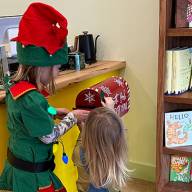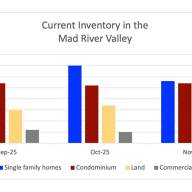What does it mean to be a steward to a watershed? And how do we begin to cultivate in our young people a sense of connection to place? Finally, at what point does a love for the natural world translate into taking actions to protect it? These are the big thoughts that I contemplate while reflecting back on my time spent in our local schools this fall.
As the education manager for Friends of the Mad River, I have the distinct pleasure of working with all the local schools that fall within the boundaries of our watershed. Each school year finds me working with the children of our community, from 3- and 4-year olds in our preschools, all the way to those high school seniors preparing to set off into the world.
Our education programs are tailored towards understanding our watershed, our local ecology, and the ways that climate change is impacting our way of life. Whether studying erosion, habitat, riparian zones, or animal hibernation patterns, students are engaging in highly meaningful and relevant explorations of the world around them.
Beyond these studies, though, there are underlying values and habits of mind that are cultivated by spending time in connection with the natural world. Students learn about themselves in relationship to the various communities of which they are a part, human and otherwise. They learn about the threats facing our wild places, and what local people can do to fight back.
They come to see themselves as “agents of change, and they recognize their potential to have a positive impact on the world around them. In short, they become the type of community members, citizens, and stewards that our world so desperately needs as we transition into an uncertain future.
And there is also fun. There are games, challenges, and countless other opportunities to find joy in digging hands in soil, hiding in bushes, or staring at tree tops. With younger schoolkids, there are so many giggles, hands being held, and smiles as we share these moments in nature. I love this aspect of my work; it is hard to feel embittered or curmudgeonly when you are surrounded by the joy and wonder of youth.
As students age, you begin to get a sense of their personalities, passions, and capabilities. There is a key transition that occurs as, after years of having their world shaped by the education they have received, they begin to be the ones shaping the world around them. Based upon what I am seeing in our local schools, we will be fortunate to have some of these young people leading the charge into the future. It’s a bit of a tonic given the doom and gloom of news cycles, politics, or the myriad other maladies of the world.
Foley lives in Waitsfield.
You might also like












